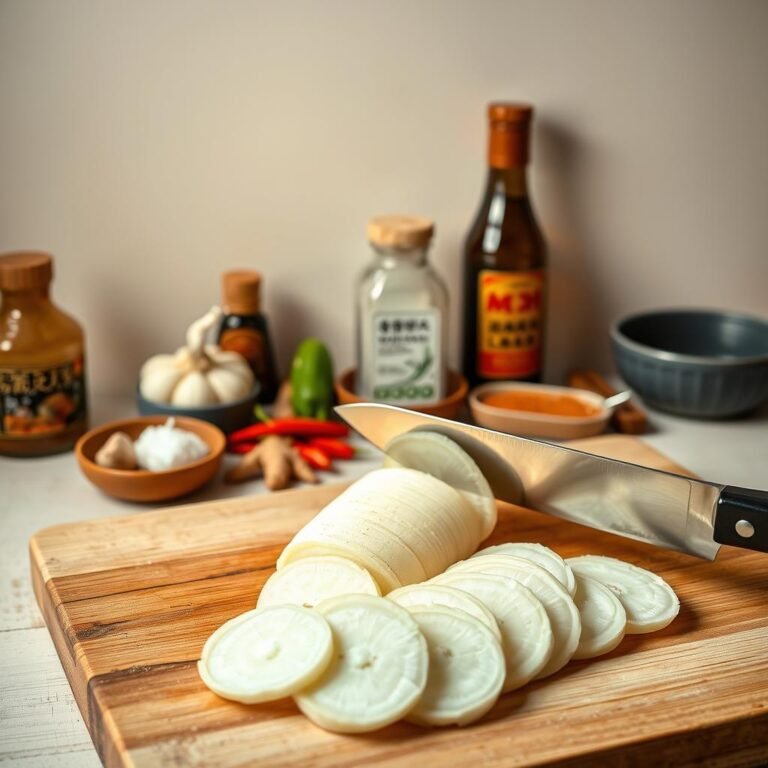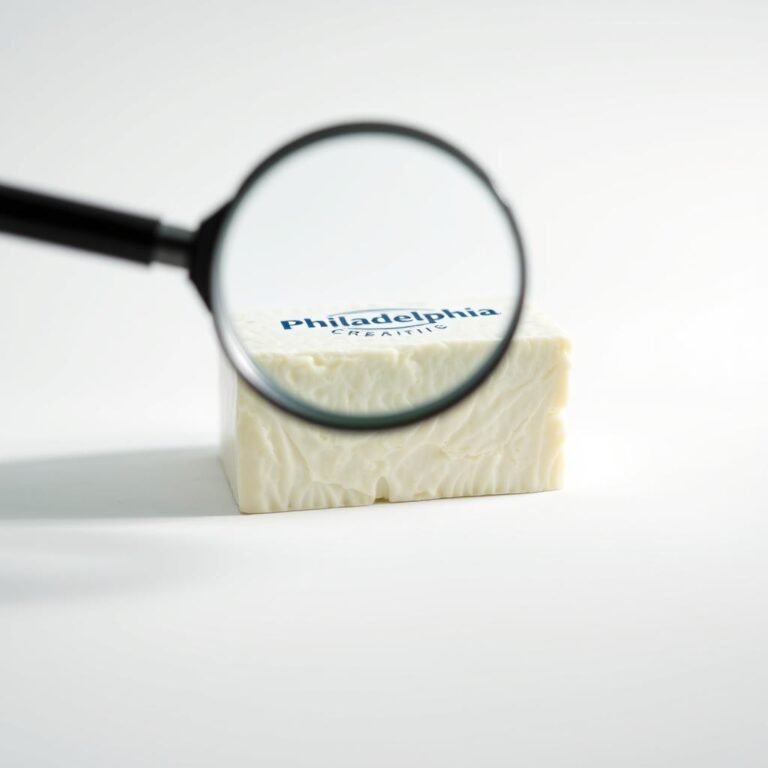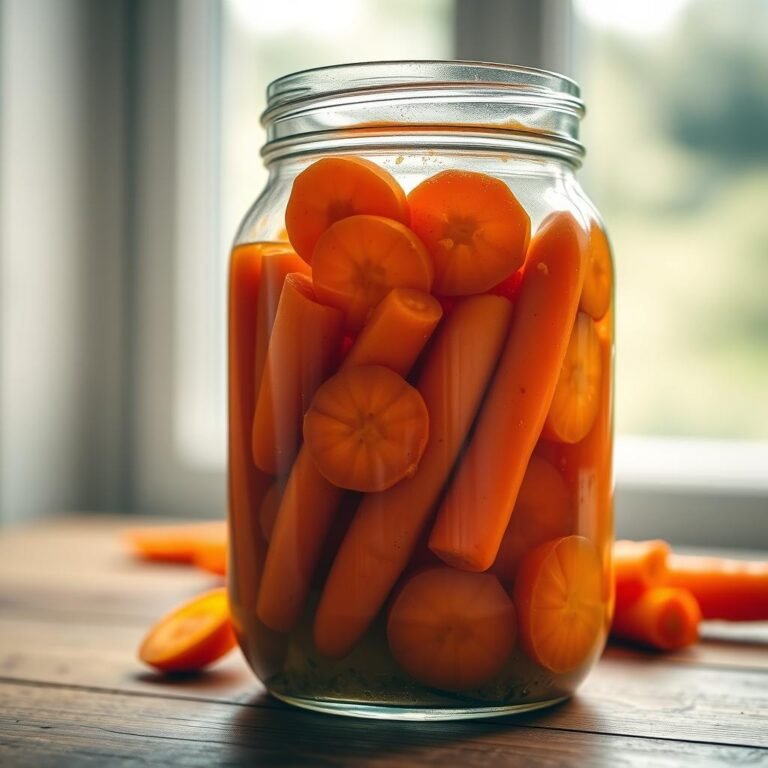How Long Does Sauerkraut Last in the Fridge
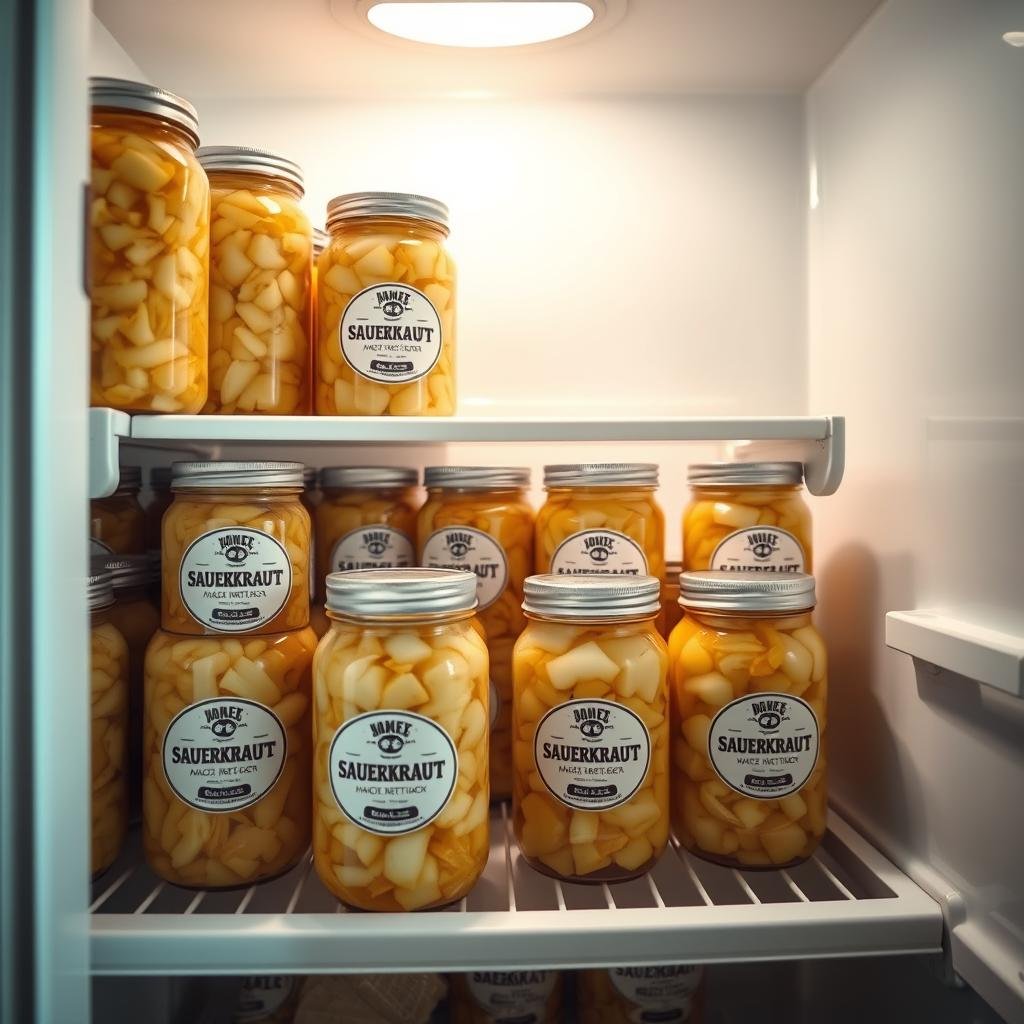
Knowing how long sauerkraut lasts is key for fans of this fermented food. The way you store it affects its shelf life. Pasteurized sauerkraut lasts longer than unpasteurized, but loses the good bacteria.
Pasteurization kills off the good bacteria in raw sauerkraut. Raw sauerkraut can stay good for 4 to 6 months in the fridge. Keep it cold and use clean tools to extend its life.
Understanding Sauerkraut and Its Preservation
How sauerkraut is made affects how long it lasts. Raw sauerkraut, not pasteurized, keeps good bacteria. It needs to stay cold to stay good and not spoil.
Storing sauerkraut right is key. Raw sauerkraut can last 4 to 6 months in a sealed container.
Pasteurized sauerkraut, on the other hand, is heated. This makes it last longer but loses its probiotics. It can last 1 to 2 months after opening if kept cold.
Homemade sauerkraut, if made right, can last 4 to 6 months in the fridge. It needs 5 to 10 days of fermentation before refrigeration. Canned sauerkraut can last up to 1–2 years unopened. But once opened, it’s like pasteurized sauerkraut.
For more on keeping sauerkraut fresh and spotting bad sauerkraut, check out this guide here.
Watch for mold, bad smell, texture, and color changes. Spotting these signs helps avoid bad sauerkraut. This way, you only eat the best.
Importance of Storing Sauerkraut Properly
Keeping sauerkraut fresh is key to its taste, texture, and health benefits. The right storage methods prevent spoilage and keep it fresh longer.
Factors Influencing Sauerkraut Shelf Life
Several things affect how long sauerkraut stays good. Important factors include:
- Storage temperature: Cooler places, like fridges, make sauerkraut last longer.
- Container type: Use airtight glass containers to keep air and germs out.
- Handling: Clean tools and hands when handling sauerkraut to avoid contamination.
Effects of Temperature on Sauerkraut Storage
Temperature is very important for sauerkraut’s quality. It should be stored at temperatures below 40°F (4°C). Higher temperatures speed up spoilage because of more germs.
- Cooler temperatures: Keep sauerkraut fresh and crunchy longer.
- Warmer temperatures: Cause it to spoil faster and get bad tastes and textures.
Storing sauerkraut right is more than just the container. It’s also about keeping it cool. Check for bad smells often. This way, you can enjoy sauerkraut’s health benefits without losing quality.
How Long Does Refrigerated Sauerkraut Last?
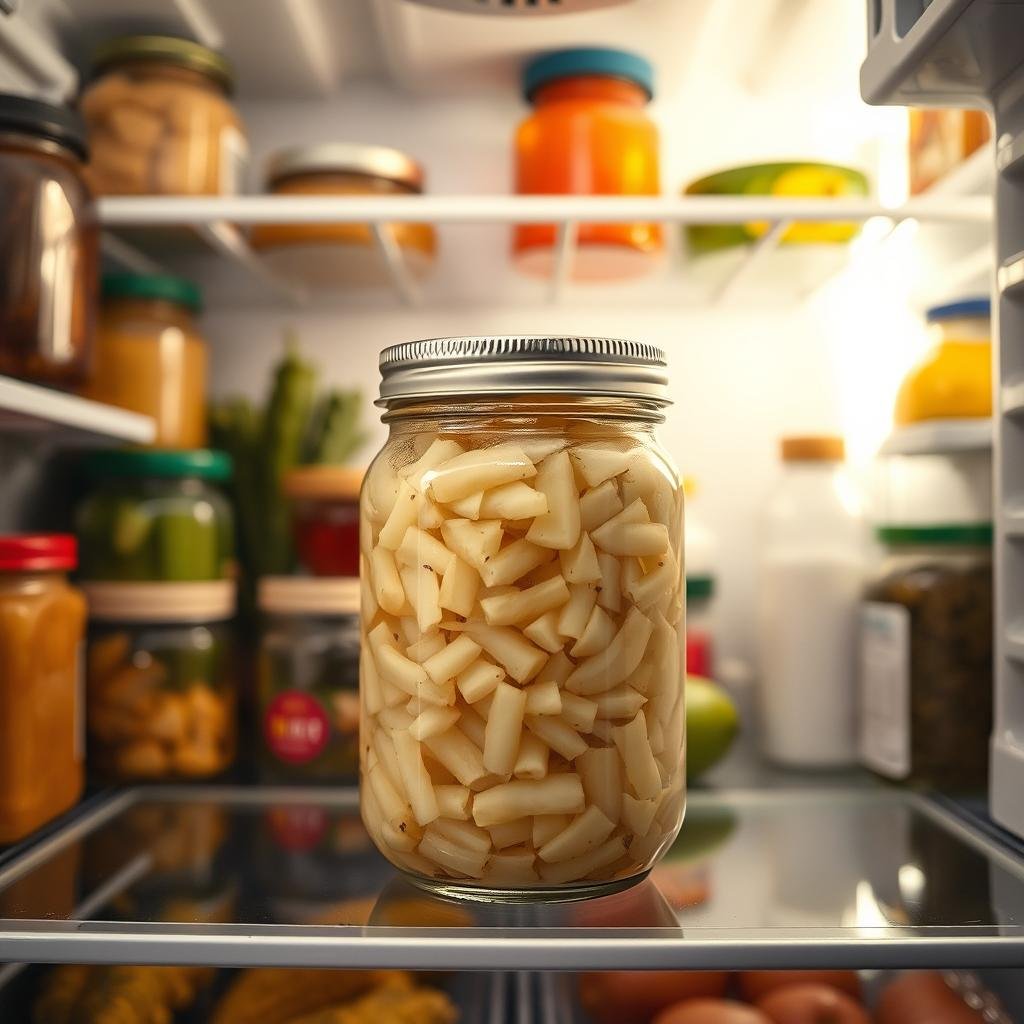
Sauerkraut is great for your diet, but knowing its fridge life is key. It lasts longer if the jar is sealed. Unopened sauerkraut can stay good for up to 6 months.
Opened vs. Unopened Sauerkraut
Opened sauerkraut lasts about 4-6 months in the fridge. Keep it covered in brine to avoid mold. Always use a clean spoon to keep it fresh.
Signs of Spoilage in Sauerkraut
Watch for signs of spoilage like bad smells or mold. These mean it’s time to throw it away. As it ages, sauerkraut gets softer and more acidic. For more info, check out this guide.
Best Practices for Storing Sauerkraut
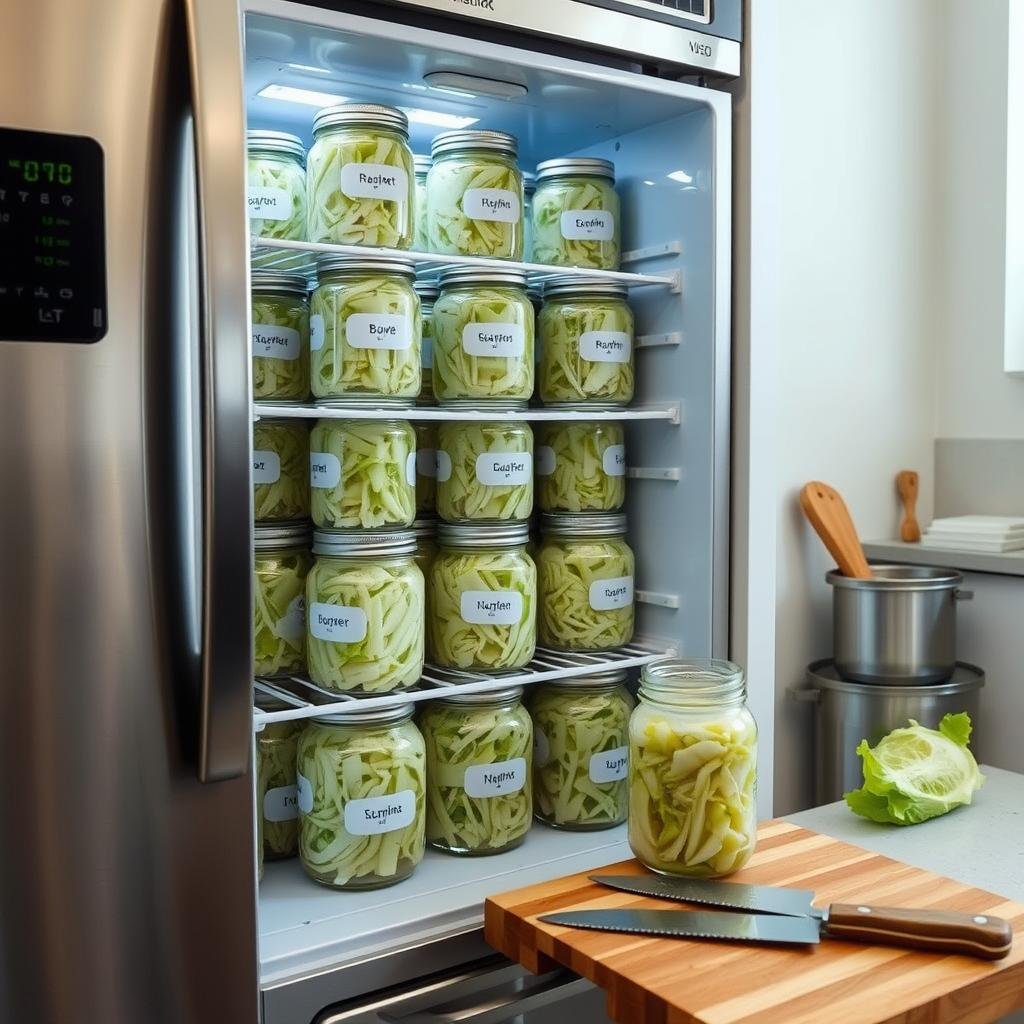
Storing sauerkraut right keeps it fresh and tasty. Follow the best ways to store it. This way, your fermented cabbage stays good and safe to eat for a long time.
Containers to Use for Storage
Choosing the right containers is important. Airtight, sealable containers like mason jars are great. They keep air out, which stops spoilage.
Always use clean utensils and jars. This keeps the sauerkraut from getting contaminated.
Tips for Extended Shelf Life
To keep sauerkraut fresh, make sure it’s covered in its juice. This brine keeps mold and spoilage away. Check the brine levels often to keep it covered.
Store sauerkraut in the fridge right after opening or fermenting. Keep it cold all the time.
Watch for any changes in color, smell, or texture. This helps spot spoilage early. Cleveland Kitchen says to keep it refrigerated to make it last longer.
Freezing Sauerkraut: Is It an Option?
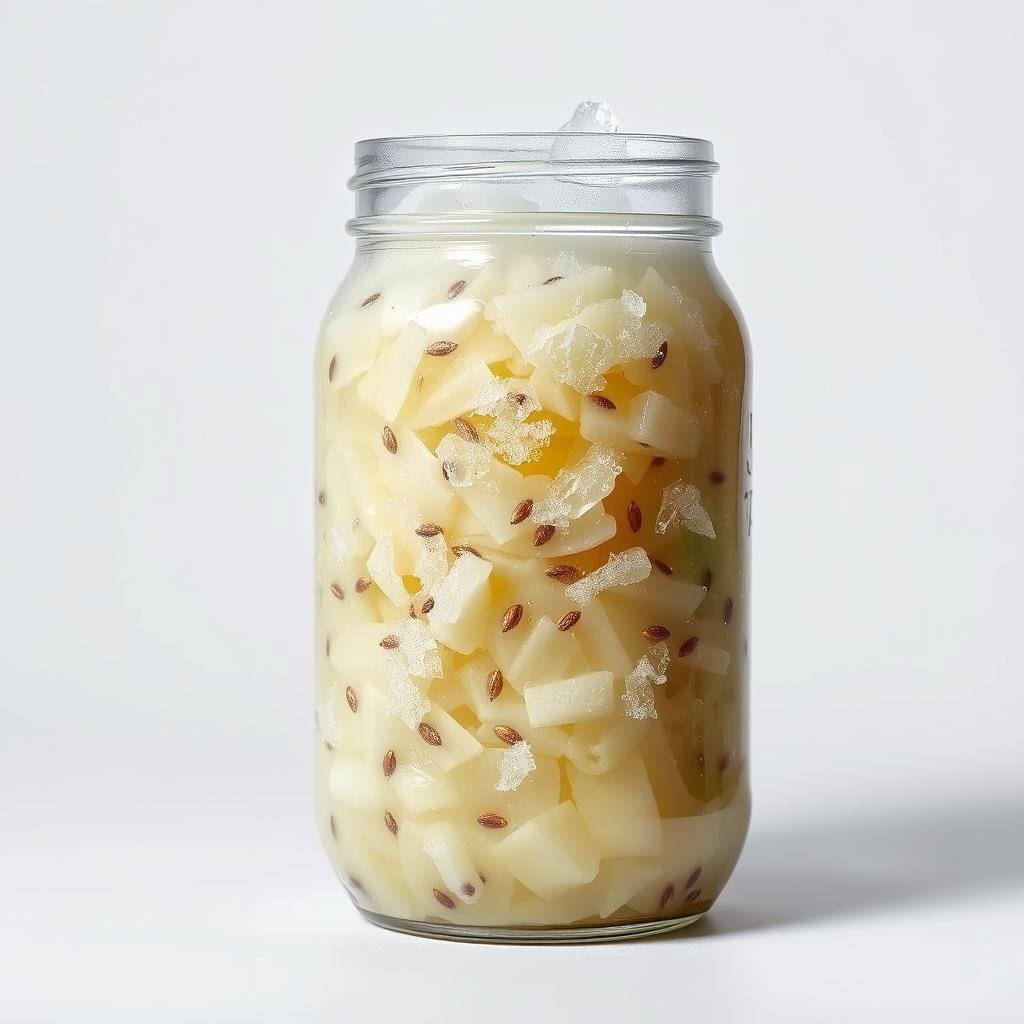
Freezing sauerkraut can extend its shelf life. But, it might change its texture and flavor. Knowing how to freeze sauerkraut right can keep its benefits for a long time.
Effects of Freezing on Flavor and Texture
Freezing sauerkraut makes it softer when thawed. This happens because water expands and breaks cell walls. The flavor stays mostly the same but might be less strong.
Even with these changes, freezing is a good way to store a lot of sauerkraut for a long time.
How to Properly Freeze Sauerkraut
To freeze sauerkraut, drain it well first. This helps keep its texture better. Put the drained sauerkraut in airtight containers or bags.
Make sure there’s little air inside. Write the date on the containers. When you want to use it, thaw it in the fridge.
Then, add it to dishes where texture doesn’t matter as much. This way, you can enjoy frozen sauerkraut while keeping its health benefits.
Homemade Sauerkraut vs. Store-Bought
Knowing the differences between homemade and store-bought sauerkraut helps you choose better. Both have their own pluses and things to watch out for. This can help keep them fresh and tasty longer.
Differences in Shelf Life
Homemade sauerkraut doesn’t last as long as store-bought. The main reason is that homemade sauerkraut doesn’t have preservatives. It can last four to six months in the fridge, if sealed well.
On the other hand, store-bought sauerkraut, like the pasteurized kind, lasts longer. It stays good until its ‘Best By’ date if not opened.
Click hereto learn more about how long sauerkraut lasts.
Storage Tips for Homemade Sauerkraut
To keep homemade sauerkraut fresh, store it in a sealed container in the fridge. Always check it for bad smells, color changes, or texture issues. It’s also important to keep it under its brine to avoid air exposure.
- Keep homemade sauerkraut refrigerated at all times.
- Ensure the container is tightly sealed to prevent air exposure.
- Regularly monitor for signs of spoilage.
- Store-bought sauerkraut comparison highlights the use of preservatives which extend shelf life.
Freezing is another option, but it might change the texture and probiotics. For more on freezing and storing, see this detailed guide.
Signs Your Sauerkraut Is Stil Good
Knowing if sauerkraut is fresh is key for both taste and safety. Learning about sauerkraut quality signs ensures every bite is tasty and safe.
Visual and Smell Indicators
Checking sauerkraut freshness involves looking and smelling. Good sauerkraut is crisp with no mold. Watch for any color changes or spots.
The smell is also important. It should be tangy and pleasant. A bad smell means it’s spoiled.
Taste Test: When to Trust Your Senses
After looking and smelling, taste the sauerkraut. Good sauerkraut tastes sour but good. It should also be crunchy, not soft.
If it tastes or feels wrong, don’t take a chance. It’s safer to throw it away than risk getting sick.
Common Myths About Sauerkraut Storage
Many people think wrong things about storing sauerkraut. These myths come from not understanding how it ferments and how to keep food fresh. Knowing the truth helps us enjoy sauerkraut more.
Debunking Misconceptions about Shelf Life
Some think sauerkraut lasts forever because of fermentation. But, it’s not true. Fermentation does make it last longer, but it’s not forever. It needs to be kept cold and sealed well.
Another myth is that any container works for sauerkraut. But, the wrong container can make it spoil faster. Use airtight, safe containers like glass or BPA-free plastic. This keeps it fresh and safe longer.
Some think any change in sauerkraut means it’s bad. But, not all changes are bad. Look at the smell and taste. If it smells bad or tastes off, throw it away. Knowing the difference helps us avoid waste and stay safe.

